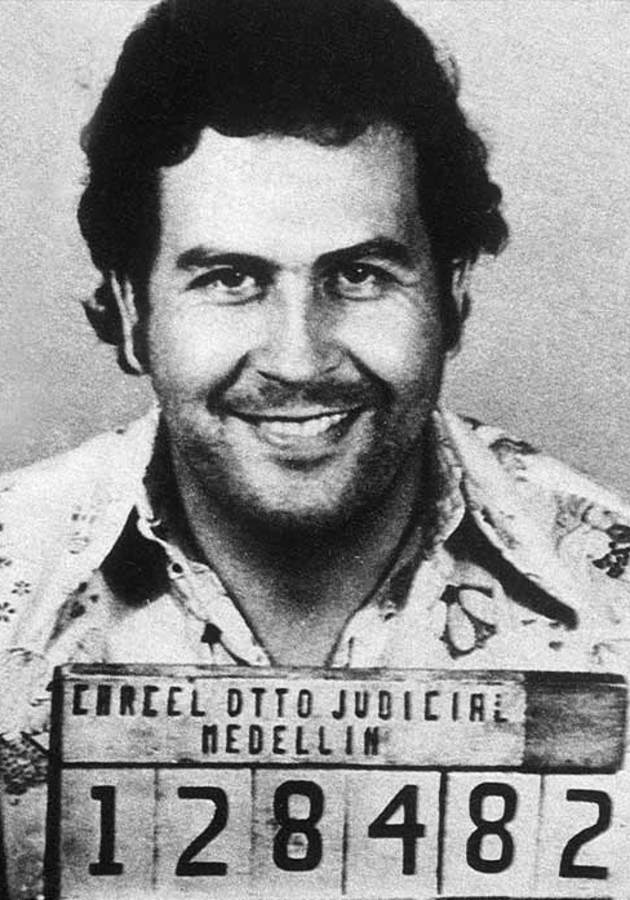The global average life expectancy stands at a little over 70 years, and the time it takes an average person to breathe in and out is about 3.3 seconds. So, chances are, you will take 670 million breaths in your lifetime. Maybe you’ve already taken half of those or maybe you’re about to take your 700 millionth breath. Either way, bestselling author James Nestor claims that you’ve probably taken most of your breaths incorrectly. He knows this not only because he’s read all the relevant books, but also because he’s done all the experiments as well. A member of that rare 21st-century breed, Nestor is often considered one of the leading immersive journalists of our age.
Named one of the best books of 2020 by many respected publications – and certainly one of the brightest spots during the year of the pandemic – his book “Breath” is an eye-opening and mind-blowing “scientific adventure into the lost art and science of breathing.” It explains, in the words of Nestor, “how the billions and billions of molecules you bring in with each breath have built your bones, sheaths of muscle, blood, brains, and organs, and the emerging science of how these microscopic bits will influence your health and happiness tomorrow, next week, next month, next year, and decades from now.” So, get ready for one of the greatest scientific adventures of your life – which can, coincidentally, lengthen and improve it!
The dysevolution of the human face
“Of the 5,400 different species of mammals on the planet,” writes Nestor, “humans are now the only ones to routinely have misaligned jaws, overbites, underbites, and snaggled teeth, a condition formally called malocclusion.” Dr. Marianna Evans, an orthodontist and dental researcher at the University of Pennsylvania, knows precisely why and, if asked to summarize her thesis in a word, that word would be: dysevolution. It’s a real thing! Popularized by Harvard biologist Daniel Lieberman, dysevolution – or the process of changing in the wrong direction – is the reason why our backs ache and why our bones grow more brittle. It’s also the reason why we have misaligned jaws and why we’re breathing so poorly. But we’re getting ahead of ourselves.
About 1.7 million years ago, the first ancestor of modern humans, Homo habilis, decided to start using tools and rocks to tenderize food. This seemingly unimportant decision changed the course of history – and, in time, our breathing habits as well. Eating tenderized meat spared our ancestors some of the effort of digesting and chewing, which saved them a lot of energy. We used this extra energy to grow larger brains. Thanks to our larger brains, around 800,000 years ago, we came up with the idea of processing food in fire. Not only did grilling helped us draw more energy from our meals, but it also saved us energy as our intestines didn’t need to break down as many food components as they needed to previously: tenderizing and grilling had already done it for them. In consequence, our intestines shrunk considerably, and our brains grew even larger.
So far, so good. But that’s not the whole story – there’s also an important subplot. You see, as our brains evolved, our faces dysevolved. The bigger our brains grew, the more they needed space to stretch out, and the only available space they could extend into was the front of our faces. Over time, this process weakened our jaw bones and loosened our sinuses and facial muscles. As our faces shortened, our mouths shrank as well, and “a bony protuberance began replacing the squashed snout of our ancestors. This new feature,” writes Nestor, “was ours alone and distinguished us from other primates: the protruding nose.”
The worst breathers in the animal kingdom
When it first appeared in Homo erectus, the protruding nose was far less efficient in filtering air than its predecessor, the snout. But it did allow for one important evolutionary advancement: a descended larynx. About 300,000 years ago, Homo sapiens became the only human species to develop this kind of larynx – all others had evolved to have their larynxes located toward the top of the throat. This helped their bodies rid themselves quickly should anything get stuck in their airways, but it prevented them from developing nimbler and more flexible tongues that could nuance and structure sounds better. Unfortunately for them, it was this ability that would eventually make all the difference: as Homo sapiens began using speech to establish and grow communities, all the other Homo species disappeared from the face of the planet.
So, it is not an exaggeration to say that the lowered larynx was one of the key factors in helping Homo sapiens conquer the world. However, it also made humans more susceptible to choking, as it created too much space at the back of the mouth. “Strangely,” writes Nestor, “the same adaptations that would allow our ancestors to outwit, outmaneuver, and outlive other animals – a mastery of fire and processing food, an enormous brain, and the ability to communicate in a vast range of sounds – would obstruct our mouths and throats and make it much harder for us to breathe. This recessed growth would, much later, make us prone to choke on our own bodies when we slept: to snore. Sapiens would become the only animals, and the only human species, that could easily choke on food and die.”
Have you ever heard a pug breathe? Well, in many ways, modern humans breathe in pretty much the same way. Pugs suffer from a range of chronic respiratory problems because they have been bred by humans for generations to have smaller sinus cavities and flatter faces. At least as far breathing is concerned, we are their equivalent among human species. That is, of course, not a compliment, but a wake-up call: put in the simplest terms possible, we did not evolve to breathe properly. Is there something we can do about it? Or have our faces changed too much for us to be able to make adaptations?
An experiment in mouth breathing
Due to the dysevolution of the human face, humans today have “the sad distinction of being the most plugged-up species on Earth.” In other words, our facial anatomy makes it very difficult for us to breathe properly. The tinier the mouth, the bigger the problem. “When mouths don’t grow wide enough,” Nestor explains further, “the roof of the mouth tends to rise up instead of out, forming what’s called a V-shape or high-arched palate. The upward growth impedes the development of the nasal cavity, shrinking it and disrupting the delicate structures in the nose. The reduced nasal space leads to obstruction and inhibits airflow.”
Studies show that more than 40% of humans today suffer from chronic nasal obstruction. Unsurprisingly, even more of us – around half, that is – are habitual mouth breathers. “So, what?” you might ask. “I’ve been breathing with my mouth my whole life and I feel just fine.” Well, Nestor says that you only think you do. His proof? A few years ago, he subjected himself to a seemingly harmless experiment, à la Morgan Spurlock of the “Super Size Me” fame. Namely, he decided to allow a doctor to block his nostrils for the span of 250,000 breaths and authorized him to place a surgical tape over these plugs “to stop even the faintest amount of air from entering or exiting [his] nose.” Let us save you the trouble from bothering with the math: Nestor had decided to breathe exclusively through his mouth for a period of 10 straight days.
The results were devastating. In the first 24 hours only, Nestor’s snoring increased by 1,300%, while his sleep apnea events increased fourfold. By day five, his heart rate variability had plummeted to dangerous levels, and his blood pressure had risen by a daily average of 13 points. With his body temperature declining and his pulse increasing, Nestor’s mental clarity worsened to a point where he started hating life. The first full breath he was able to take through his nose – which was many hours after his plugs had come out on the 10th day – was an enormous relief and refreshment. As it only should have been, for it was noses that evolved to help us breathe, not mouths.
The benefits of nose breathing
“For the past century,” writes Nestor, “the prevailing belief in Western medicine was that the nose was more or less an ancillary organ. We should breathe out of it if we can, the thinking went, but if not, no problem. That’s what the mouth is for.” As Nestor’s mouth breathing experiment has demonstrated all too clearly, nothing can be farther from the truth. And it isn’t the first experiment to reach this conclusion either.
Decades before Nestor, Norwegian-American orthodontist Egil Peter Harvold stuffed silicon deep into the nasal cavities of a group of rhesus monkeys to see what might happen. Two years later, their faces had visibly transformed, “growing longer, slack-jawed and glazed over.” Mouth breathing, in short, isn’t just poorly adapted for breathing, but the more you practice it, the more your airways have to adapt – and for the worse. “Inhaling air through the mouth,” explains Nestor, “decreases pressure, which causes the soft tissues in the back of the mouth to become loose and flex inward, creating less overall space and making breathing more difficult.”
On the other hand, inhaling from the nose forces air against the very same tissues at the back of your throat and pushes them outward, thereby making the airways wider and breathing easier. And that’s just the beginning: unlike your mouth, your nose can also clean, heat, and moisten the air you breathe in. The process releases chemicals which lower your blood pressure and regulate your heart rate, among other health benefits. There is a reason why incidences of snoring and sleep apnea are more common in the spring: when your nose gets stuffed due to seasonal allergies, you start mouth breathing, which leads to the gradual collapse of your airways.
The most interesting part of this story is that many of the problems related to mouth breathing are rather new. While documenting the lives of 50 Native American tribes in the 1830s, adventurer and researcher George Catlin was amazed to observe that almost all of them were breathing through their noses. He was also not hesitant to make an immediate connection between this habit and the people’s strong jaws, perfect teeth and lack of sleep issues or other chronic health problems. His idea that nose breathing is “the great secret of life” was laughed away by the medical community at the time. But Catlin was right. Everybody else wasn’t.
The perfect breathing rhythm
“The air which enters the lungs is as different from that which enters the nostrils as distilled water is different from the water in an ordinary cistern or a frog-pond,” Catlin wrote about two centuries ago. It wasn’t an original observation – he was merely trying to capture the essence of a few Native American myths of didactic nature. Dig a little deeper and you’ll realize that most ancient civilizations have those. Usually, they call them prayers. Upon studying many of them, and consulting relevant literature, Nestor realized something rather fascinating.
You see, whether the sa-ta-na-ma chant, one of the best-known techniques in Kundalini yoga, or the Om-Mani-Padme hum, the most popular Buddhist mantra, whether the Latin version of the rosary in Catholicism or the Hindu mundra called khechari – all of these prayers (and, in fact, many others from around the world) require pretty much the same slow and steady breathing patterns, comprised of six-second inhales and vocalizations followed by six-second pauses for exhales. An Italian study from 2001 discovered that the most efficient breathing rhythm differs by just half a second, as it includes 5.5-second inhales and exhales, and works out almost exactly to 5.5 breaths a minute.
The half-a-second difference, according to the researchers, is negligible; but the health benefits aren’t. By breathing slowly, they say, you leave more carbon dioxide in the system, and carbon dioxide dilates your blood vessels and helps them transport more blood around your body. That helps you feel more energized and more efficient, not to mention a lot calmer. The calmness prayers induce comes from “the state of coherence” your body sinks into during recitation, as the pace of 5.5 breaths a minute syncs perfectly with your inherent cardiovascular Mayer rhythms. In fact, this may be one of the reasons why prayers evolved in their current forms and why people are so responsive to religious messages after delivering them. They feel, for lack of a better explanation, on the same wavelength as the universe. That’s because they literally are.
Final notes
Described as “awesome” and “fascinating” by quite a few people and publications, “Breath” by James Nestor is “full of dazzling revelations,” as British physician Rangan Chatterjee has noted in a review. For the purposes of our microbook, we could go over only a few. But trust us, there are many others, many of them eye-opening and noteworthy. You won’t regret researching them further. Not one bit.
12min tip
Breathe through your nose as often as you can: your mouth hasn’t evolved to help you breathe properly. Also, alternate between 6-second inhales and 6-second exhales: that’s the perfect breathing rhythm. Science says so.





























